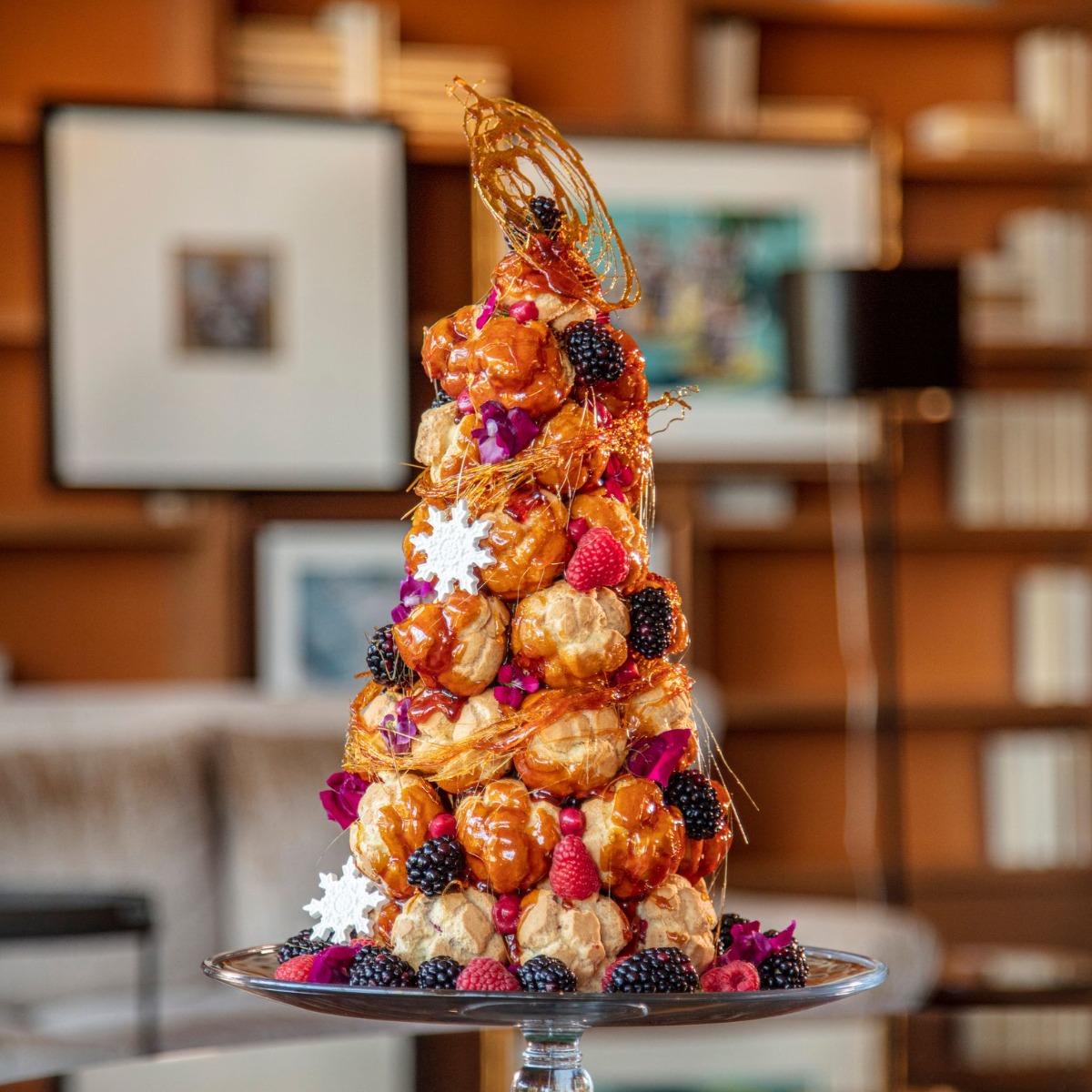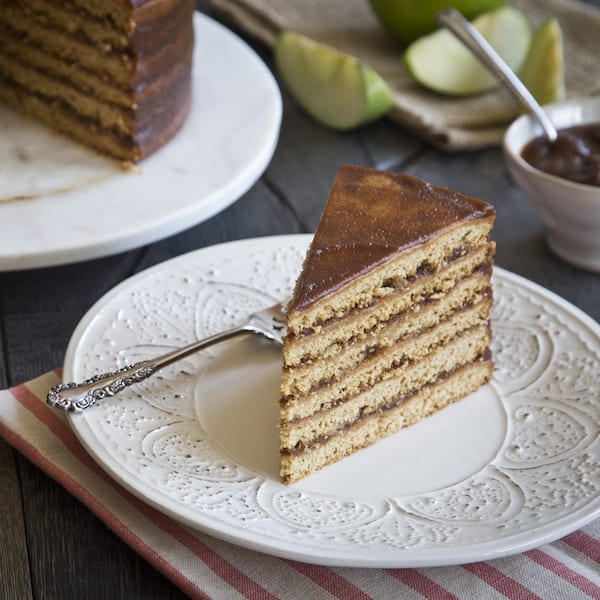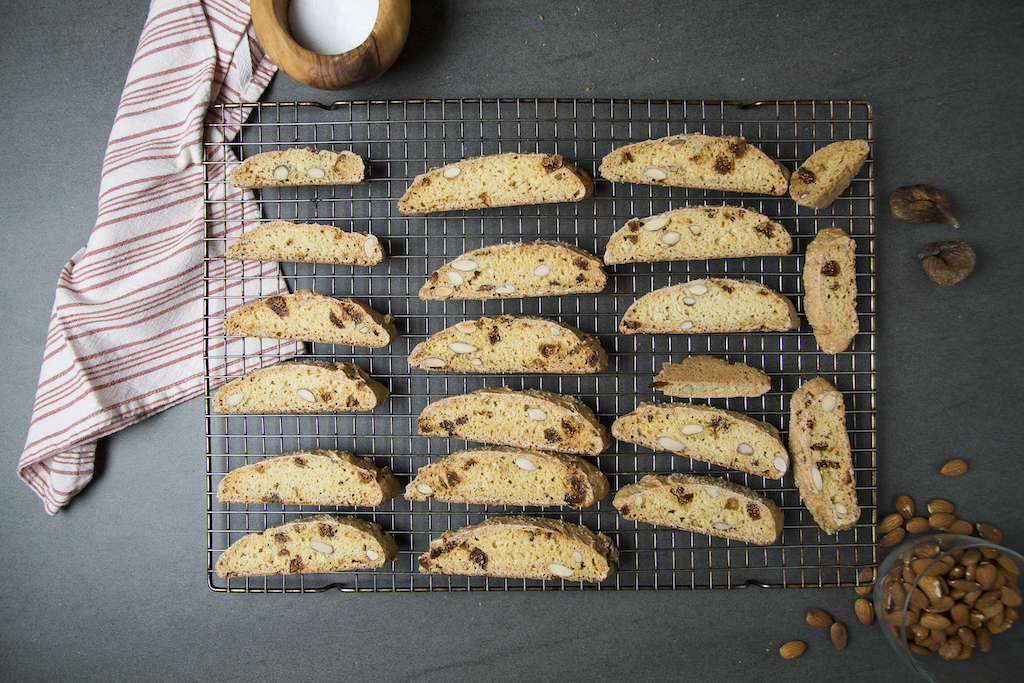Culinary Class
How To Make Pan de Muerto
By: Hannah Lee Leidy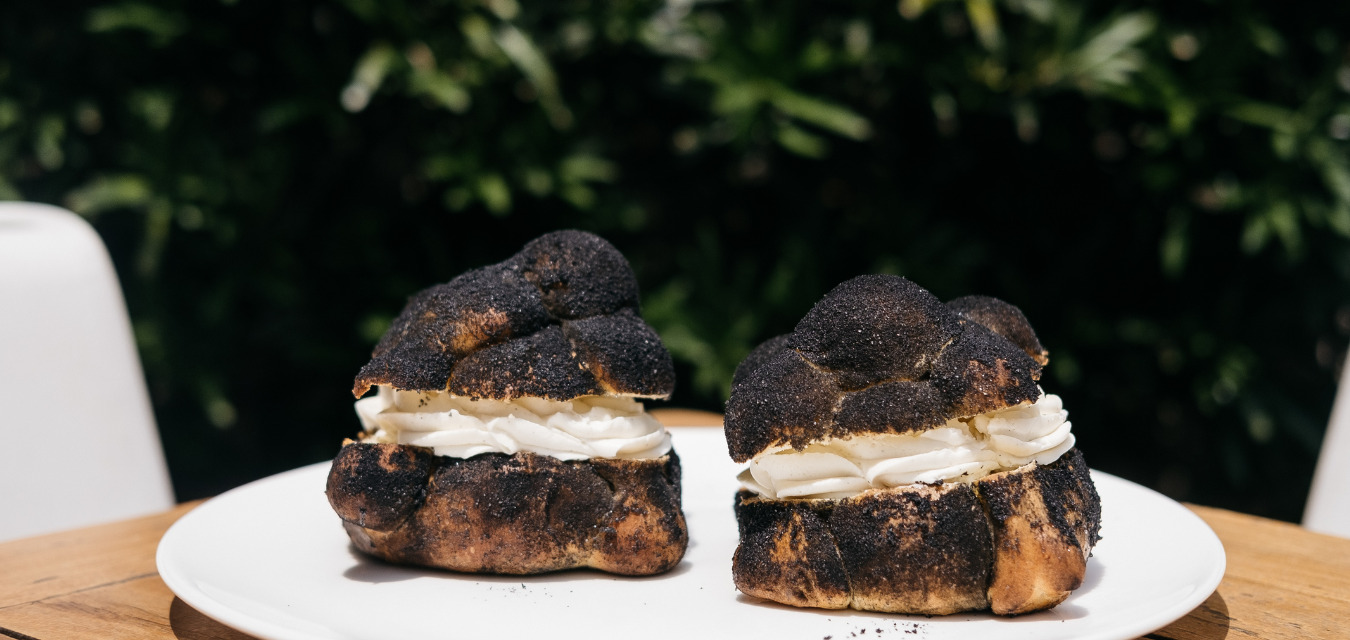
On November 1, Día de los Muertos is celebrated annually in Mexico, marking a day when the curtain between the living world and spirit world lifts. It’s said that the dead are able to join their loved ones for feasting, dancing, and music. One customary tradition is preparing an ofrenda, or altar, to honor passed friends and family members. The living will decorate these altars with flowers, pictures of the honorees, and their favorite foods and drinks. The spread traditionally includes pan de muerto, a sweet roll shaped and decorated to simulate bones on a skull.
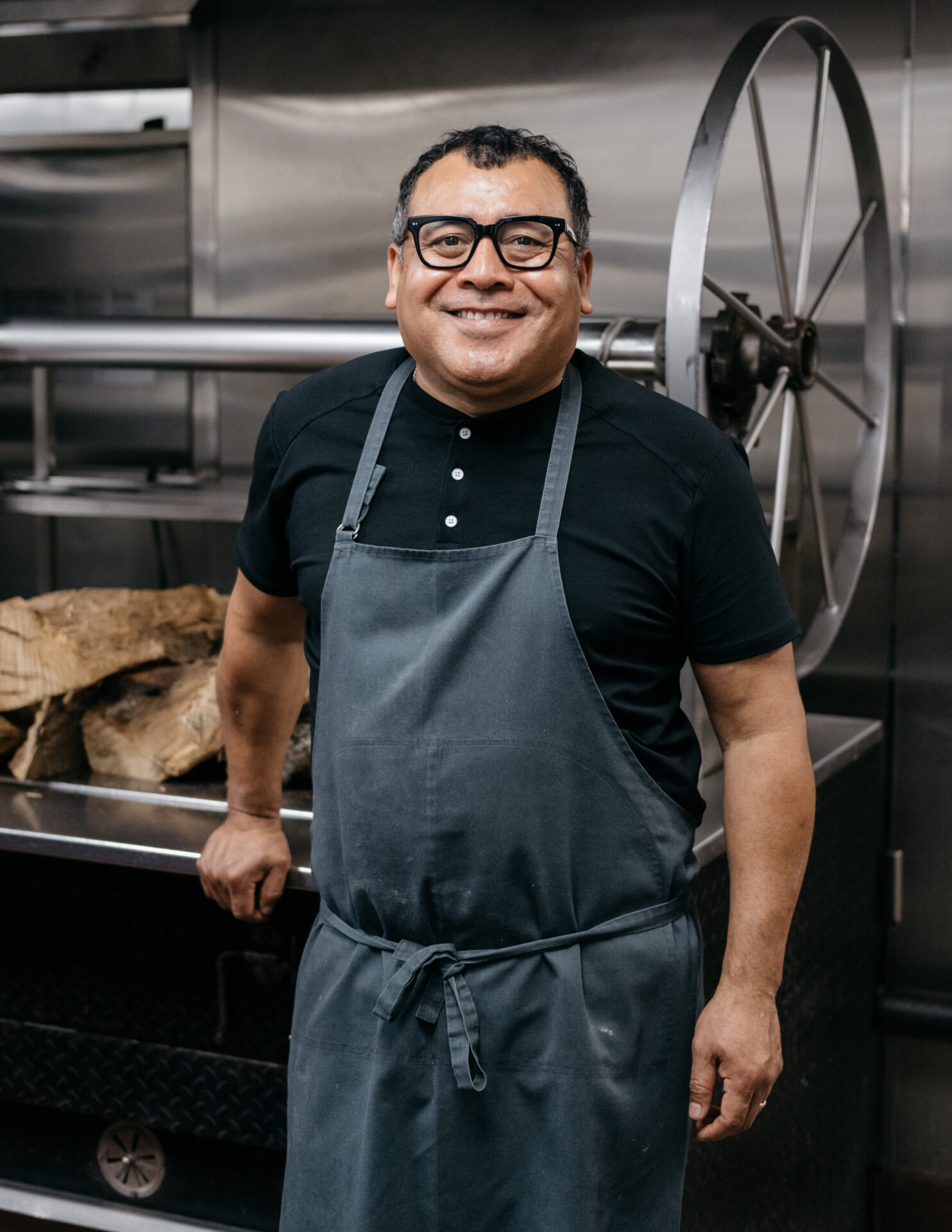
“The pan de muerto is one of the biggest offerings you can put on the table,” says Ruben Ortega, executive pastry chef at H Town Restaurant Group in Houston and brother to celebrity chef Hugo Ortega. He describes how, growing up, there was a large pan de muerto placed in the window and smaller, personal-sized ones for the family to eat. Recipes vary, some similar to conchas, others more like a brioche bread roll.
In leading the pastry programs within H Town Restaurant Group’s empire, including Hugo’s, URBE, Caracol, and Xochi among others, Ortega re-creates classic desserts he and his brother grew up eating in Mexico but with a chef’s touch. That might mean flan with a New York cheesecake-style spin or a Veracruz interpretation of bananas foster. At each restaurant, Ortega makes all components in house using traditional cooking techniques. “It’s sometimes a tedious process,” he says, “but it’s the way my grandmother chose to make it.”
Ortega’s version of pan de muerto bears semblance to a dessert sandwich: brioche rolls sliced and filled with a vanilla-orange blossom whipped cream with apricot jam. “The cream is super light and airy and the bread is light,” he says. “You can eat it as a dessert or eat it even without the cream and marmalade, like a croissant.”
He makes different-sized rolls, each topped with knobs of dough shaped to look like bones in a skull. After baking, he brushes them with simple syrup and dresses them in charcoal sugar to give them a spooky appearance (he says store-bought black sanding sugar works just fine, too). In order to keep the pan de muerto sturdy enough to spend hours on the ofrenda, Ortega stabilizes the cream by heating it with dextrose powder before whipping it. This keeps the cream lofty within the sandwich, allowing plenty of time to celebrate the lives of loved ones past before digging in to dessert.
Pan de Muerto

For the vanilla-orange blossom cream:
3¾ cups heavy whipping cream
⅔ cup dextrose powder
3¼ tablespoons sugar
2 teaspoons vanilla paste
1 tablespoon orange blossom water
⅛ teaspoon xanthan gum powder
For the sponge:
1½ teaspoons instant yeast
1 cup flour
⅔ cup lukewarm milk
For the dough:
2 eggs
room temperature
3 egg yolks
room temperature
2¾ cups flour
2 teaspoons orange zest
2 teaspoons orange blossom water
10 tablespoons unsalted butter
diced and softened
1 teaspoon salt
½ cup sugar
For assembly:
1 cup sugar
Black sanding sugar
Apricot jam (store-bought is fine)
Special equipment: Piping bag
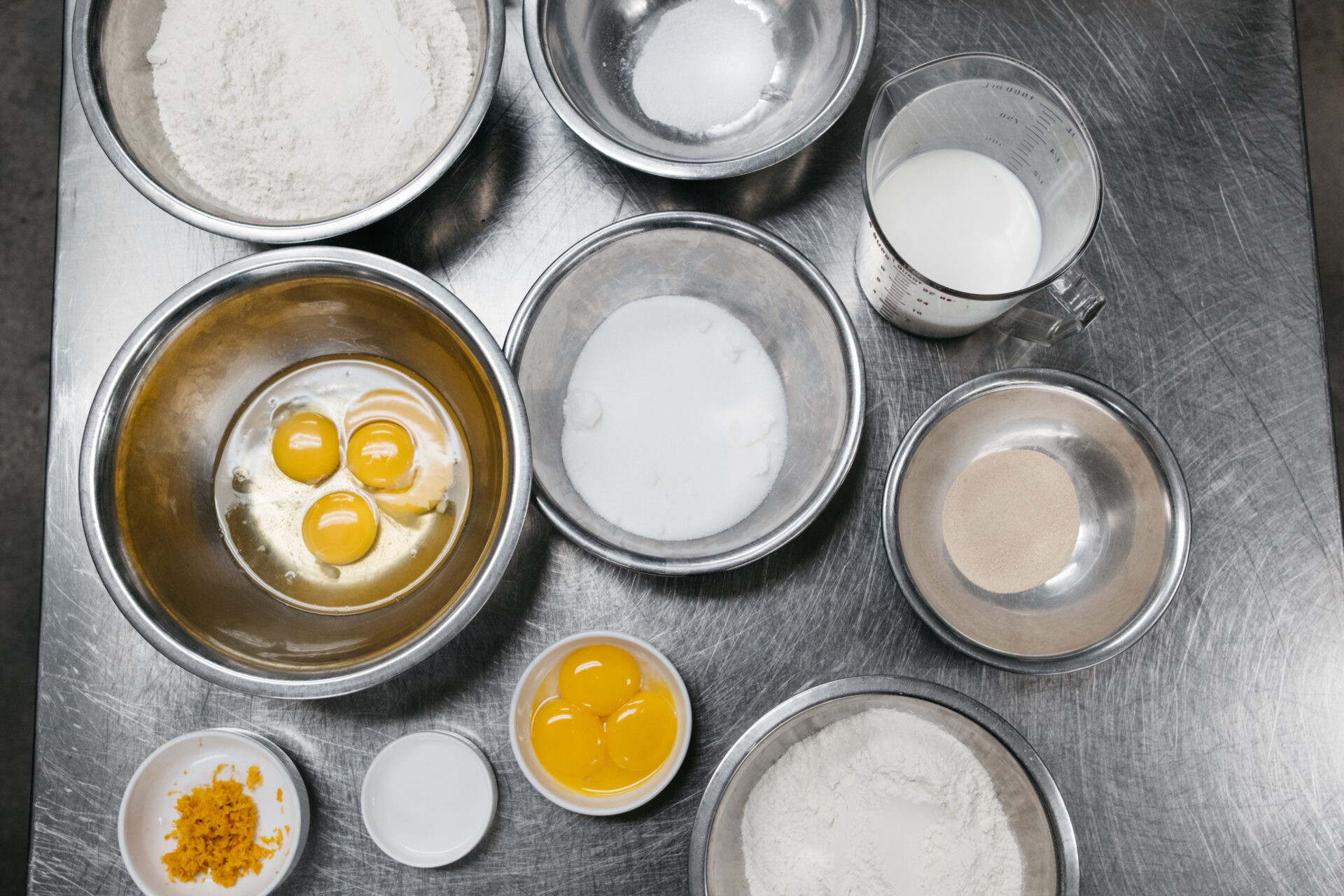
Step 1
Make the vanilla-orange blossom whipped cream
In a pot over medium heat, add cream and stir in dextrose powder and sugar until dissolved; bring to a boil. Transfer cream mixture to a mixing bowl and stir in vanilla paste. Let sit for 25 minutes. Add orange blossom water and xanthan gum and blend using a hand mixer until soft peaks form. Refrigerate at least 1 day before using.
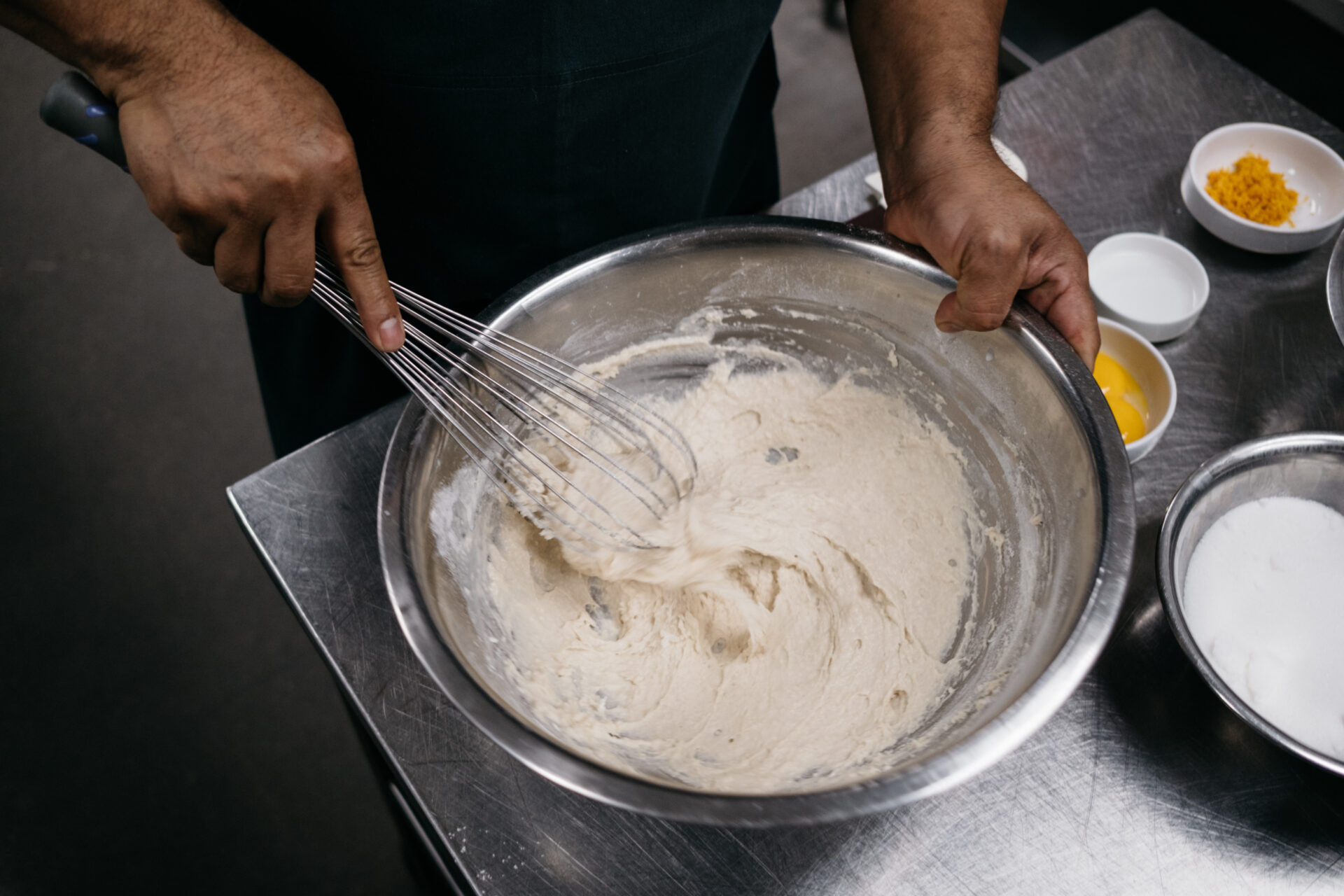
Step 2
Make the sponge
In a mixing bowl, combine yeast, flour, and milk until mixture resembles pancake batter. Cover bowl with a tea towel and let sponge rise, about 12 minutes.
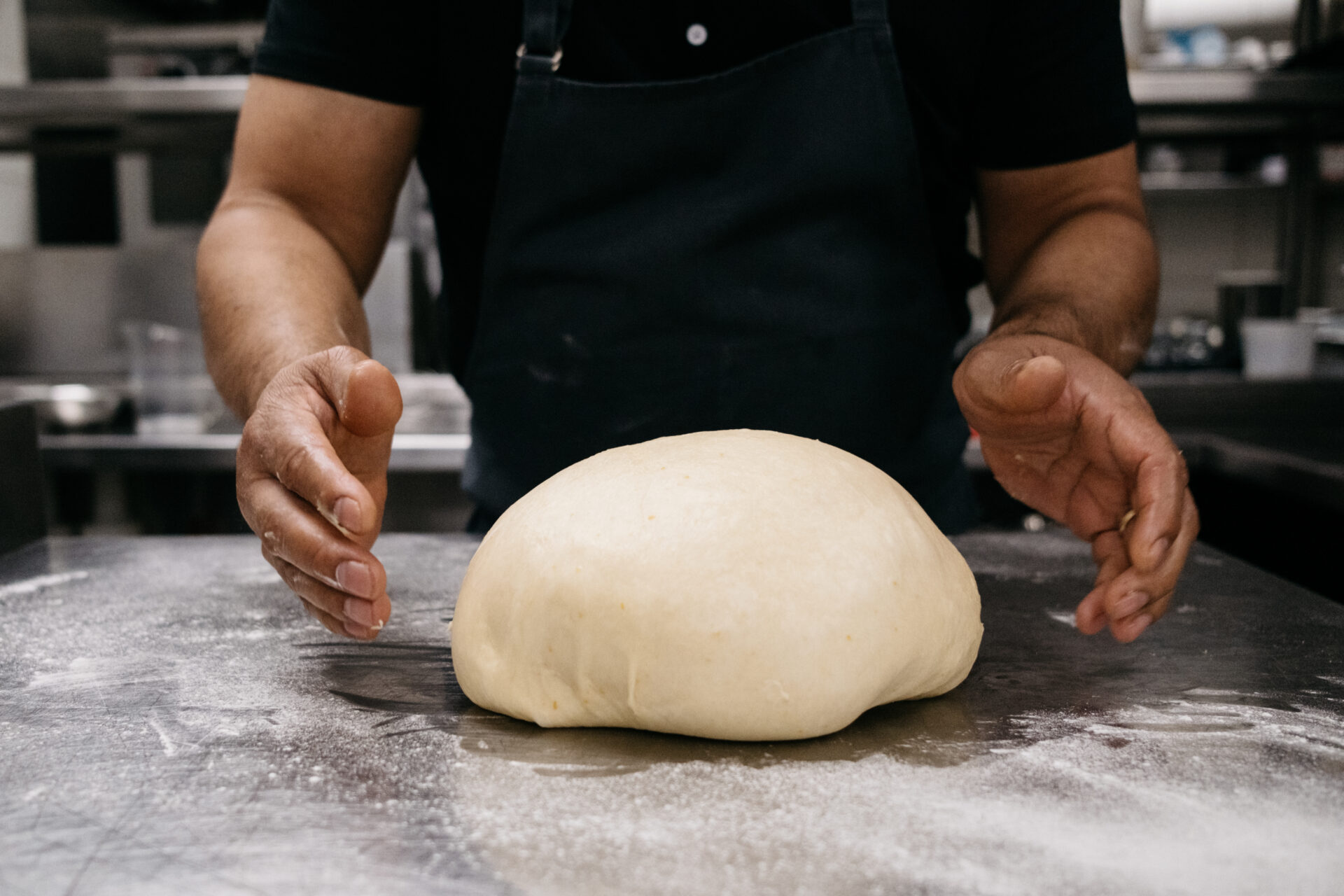
Step 3
Make the dough
In bowl of stand mixer fitted with a dough hook attachment, combine sponge, eggs, egg yolks, flour, orange zest, and orange blossom water and mix until dough turns sticky. Gradually add butter in pieces, pausing between additions until each piece is incorporated. Pause mixer and add salt and sugar. Resume mixing until evenly combined. Use hands to shape dough into a tight ball, and transfer to an oiled bowl. Cover with plastic wrap and let dough proof until doubled in size, about 30 minutes.
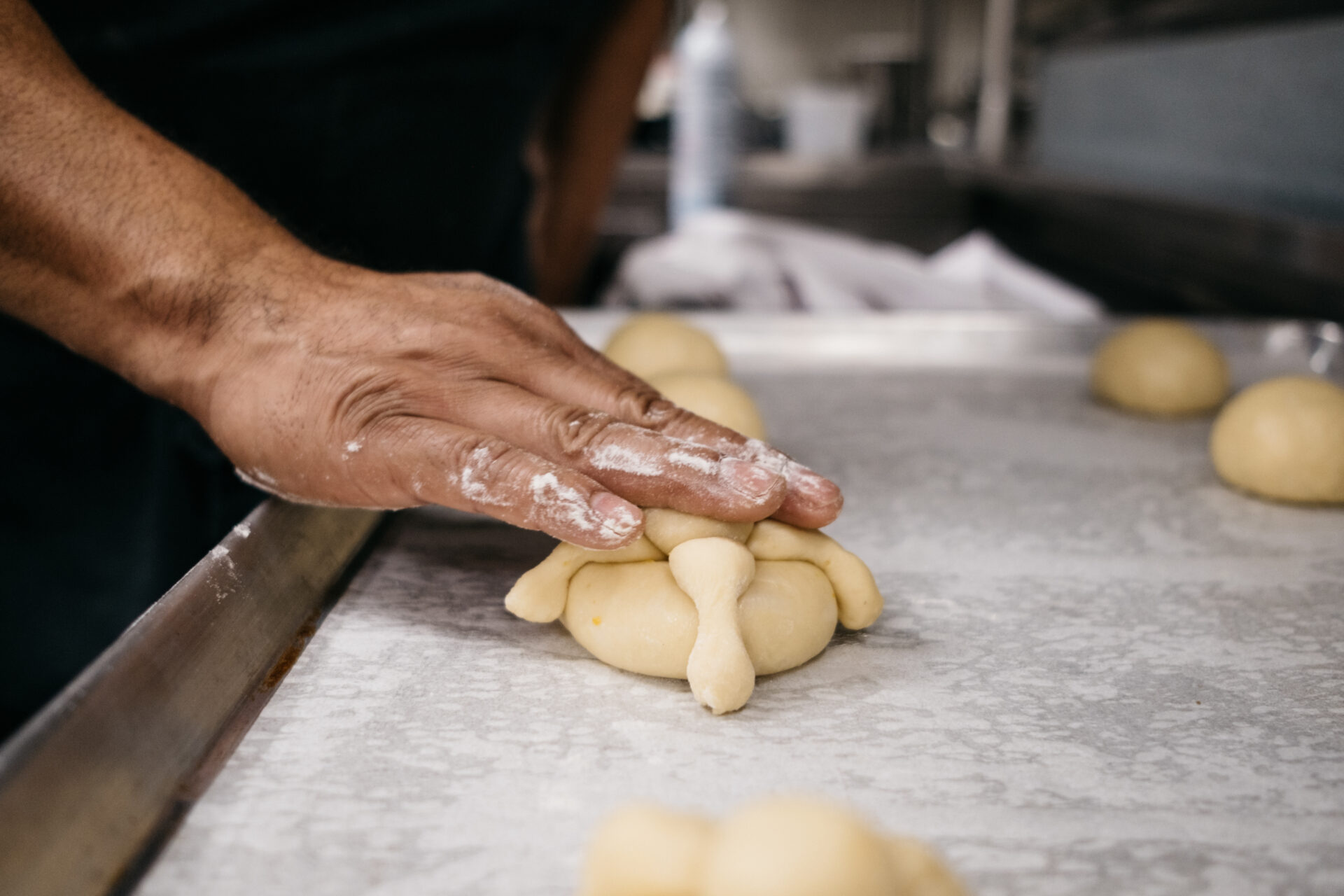
Step 4
Proof and shape
Once dough is proofed, punch to remove air and divide into 4½-ounce portions. Remove 1½ ounces from each and reserve for making the huesitos (bones) to decorate each roll. Form the huesitos by rolling dough into 2 small logs for each roll; use your fingers to gently indent each to create a bone shape. Arrange bones on top of each roll in a cross shape. Use thumb to make indentation on top of each bun where bones cross. Roll a small piece of dough into ball and place in the middle of each indentation, pushing down softly.
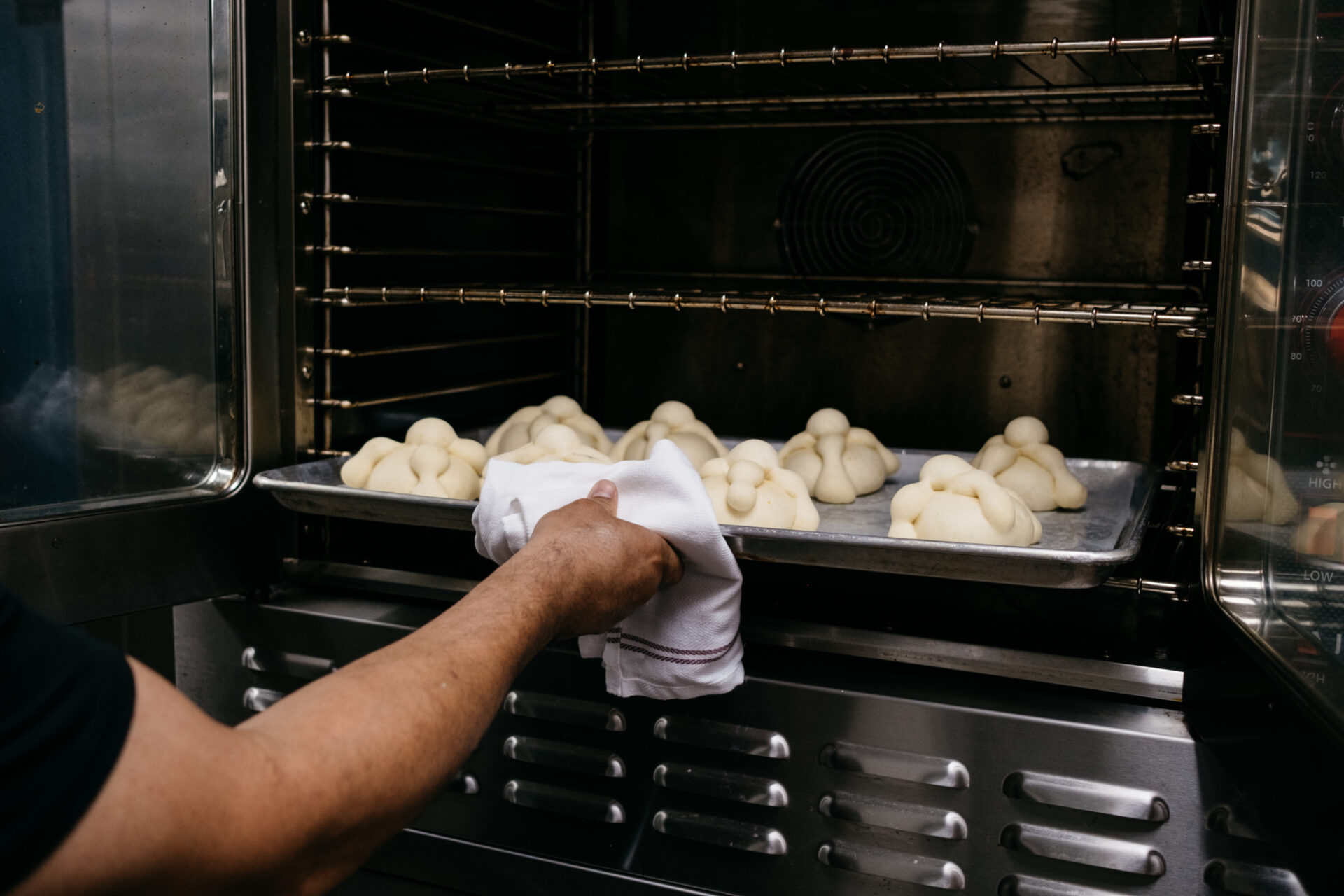
Step 5
Bake
Line a sheet pan with parchment paper and spray with cooking spray. Arrange rolls several inches apart (they will expand when proofing and baking) and let rise until almost doubled in size, about 20 minutes. Bake rolls in preheated oven at 320 degrees for about 16 to 20 minutes or until golden brown. Cool completely before assembling.
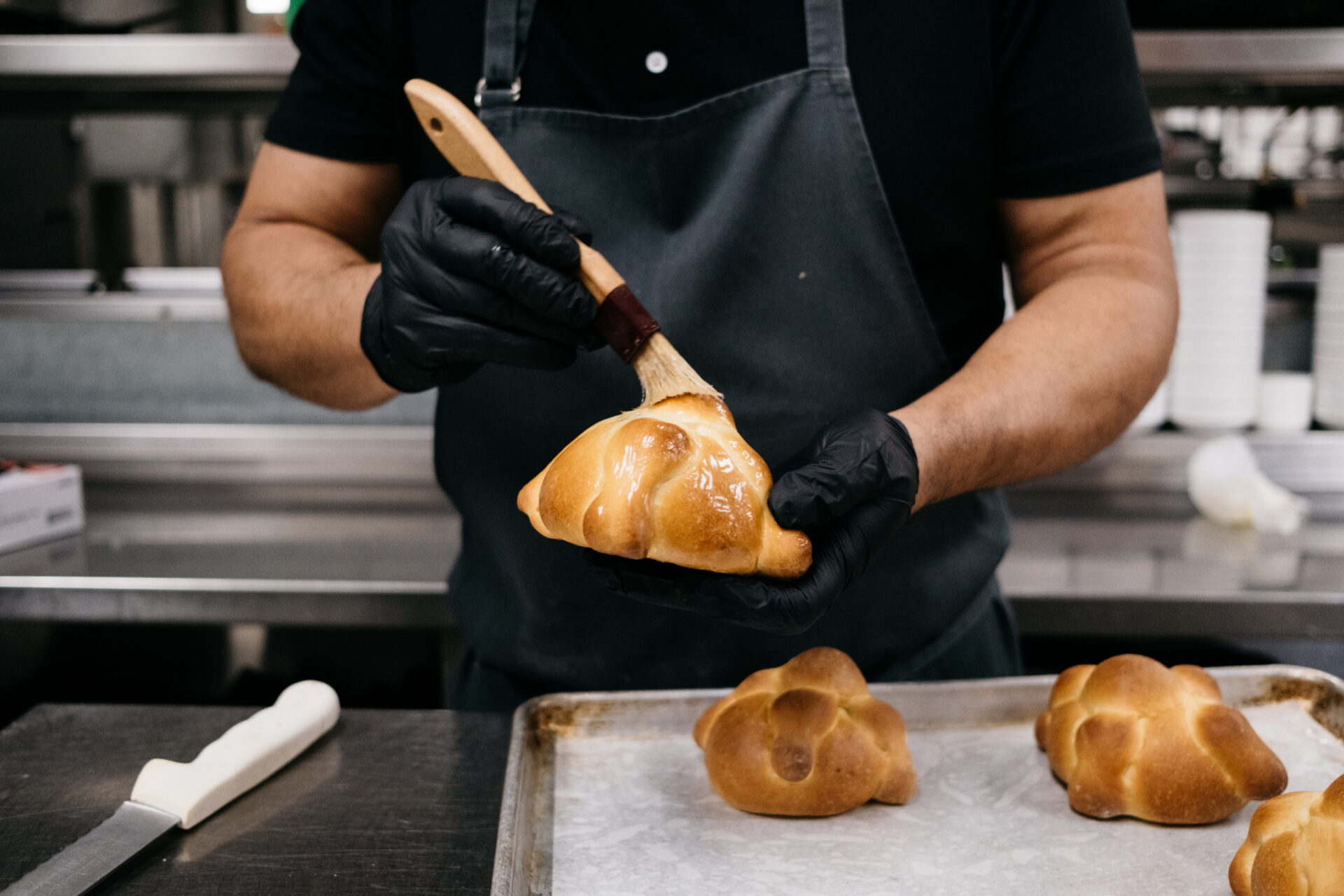
Step 6
Assembly
While rolls cook, make simple syrup by bringing 1 cup water and 1 cup sugar to a boil in small pot. Cook for 3 minutes before removing from heat. Cool completely before using. Brush cooled rolls with simple syrup and sprinkle with sanding sugar. Slice each in half, lengthwise. Transfer whipped cream into piping bag and pipe a border of cream around outside edge of bottom slice, leaving middle open for apricot jam. Dollop jam in center and top with other slice. Repeat for remaining rolls.
share
Crafting the Perfect Croquembouche
Jackie Joseph, winner of Food Network's 2021 Best Baker in America series, walks us [...]
How to Make Appalachia’s Apple Stack Cake
Apple stack cake is a modest, rustic confection most closely associated with the Appalachian [...]
How to Make Biscotti
You don't need an Italian nonna to learn how to make biscotti from scratch. [...]





